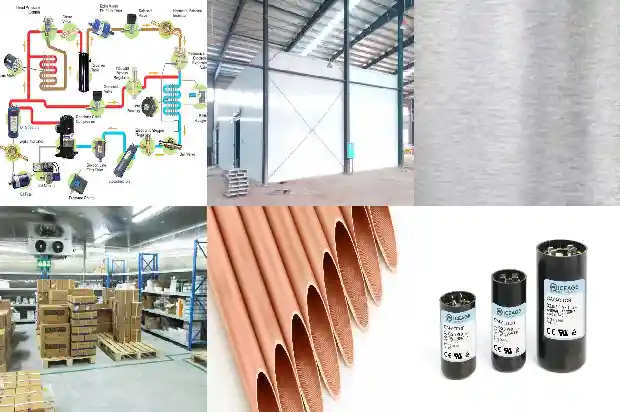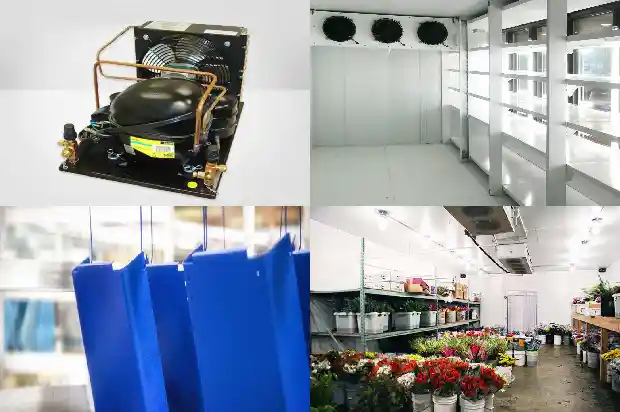For Computer Room Air Conditioners, Besides Air - cooled and Water - cooled, What Other Cooling Methods Are There?
2024-12-30
- Free Cooling
Higher operating temperatures generally also benefit the free cooling system. In the ASHRAE 90.1 - 2010 guidance document, free cooling is almost a mandatory requirement for energy conservation and will surely be widely applied. The capital investment in energy - saving retrofits will partially offset the benefits of operating cost savings. However, achieving free cooling during retrofits or upgrades is also a technical and investment challenge. New standards are expected to emerge within the next two years, making free cooling more feasible.
Free cooling near water sources may have more advantages. Eventually, data center operators will be able to adopt free cooling measures under more climatic conditions than previously expected, partly due to the contribution of higher operating temperatures.
- Sealed Cooling
Sealing measures cannot solve overheating problems caused by incorrect cooling plans, insufficient air flow, or cooling capacity. Retrofits of sprinkler and/or gas fire - extinguishing systems will significantly increase costs. Besides trying to avoid incorrect implementation, daily optimization is also crucial: install blanking plates in unused rack spaces, block holes in raised floors in a timely manner, and clean up cables under the floor that affect ventilation. - Rear - door Coolers
They are also highly accepted, partly because of the renewed interest in water - cooled methods. If the large computer room air - conditioning system is replaced with a new cooling method close to the equipment, it is believed that the data center industry will operate better than it does now. Educational background and the personal desire to be different may give rise to new cases, but the contradiction between cost and power availability will determine the final result. - Evaporative or Adiabatic Cooling
Although the scientific principle of using the evaporative method for refrigeration is simple and it is gradually becoming popular, it still seems novel to most data center operators. Adiabatic cooling is achieved by reducing the pressure of a certain substance operating in a closed environment, causing these substances to boil like magma surging to the surface of a volcano, while wind takes away the high temperature on the mountain peak. Adiabatic cooling is still effective in warm and dry climates, greatly expanding the validity period of "free cooling" throughout the year. Its main drawback is that it consumes a relatively large amount of water, but for the same amount of cooling, the cooling water it requires is still much less than that of a standard cooling tower. - Close - coupled or Heat - source Cooling
The close - coupled cooling method operates more effectively by being close to the heat source. This is nothing new - just ask an old mainframe operator or any laptop computer designer. Although close - coupled cooling is still "mainstream" in data centers, newer methods often perform better in meeting the demand for energy efficiency and attract more attention. Its working principle is simple: consume energy to blow a large amount of air into the space under the floor or into the air duct, and then pull this air back to the air - conditioner.
More promising technologies include immersion cooling: immersing the entire server in mineral oil to achieve extremely high cooling efficiency with minimal energy consumption. But how will technicians feel when they need to handle servers covered with oil both inside and out? Obviously, this cooling method is not suitable for all scenarios. - Higher Operating Temperatures
The American Society of Heating, Refrigerating and Air - Conditioning Engineers (ASHRAE) first issued recommendations on higher - temperature data centers in 2008, but it did not attract attention. Servers do not need to be refrigerated. Even when the inlet air temperature reaches 75 - 80°F (25 - 27°C), these devices can still operate well. Server manufacturers have actually expanded the operating temperature range of their products, and old equipment can operate within the expanded temperature range just like new equipment. Increasing the operating temperature can significantly save energy consumption, but people first need to recognize this approach and then agree to make the hot aisle hotter - imagine a temperature of 100°F (38°C)? This will stimulate the application and popularization of rear - door coolers. - Chimney - style Cabinets and Ceiling Ducts
Using the air duct formed by the space above the ceiling to transfer air to the computer room air - conditioning system and ensuring that the return air returns to the air - conditioner's cooling coil at the highest temperature can significantly increase the cooling capacity of the precision air - conditioning system. The final equipment form that combines the ceiling - mounted air duct and the hot - aisle measure is the chimney - style cabinet, which can achieve the maximum cooling efficiency. High - temperature exhaust gas from the server group is discharged from the chimney at the rear of the cabinet and then directly returns to the air - conditioning equipment through the air duct above the suspended ceiling. During the entire process, hot air and cold air remain separated, so a high energy efficiency ratio can be maintained.
Although the effect is obvious, chimney - style cabinets have not been vigorously promoted or widely accepted. This may be because the fully sealed design has better flexibility and can use more cabinets to achieve the same effect. However, chimney - style cabinets can maintain the cold - aisle temperature in the entire room, making the working environment more comfortable.
Related Articles
- Analysis of Seven Reasons for Ice Formation in Computer Room Air Conditioners
- Safety Regulations for Ammonia Refrigeration Machine Room
- Common Issues to Pay Attention to During Cold Room Installation and Construction
- Influence of Fin Spacing of Evaporator in Air Cooler on Frost Formation
- Air - side Economizer
- Winter Approaches: How to Solve the Low High - pressure Issue of Air - cooled Condensing Units?
- What Are the Common Causes of Cold Air Blower Noise?
- How to Troubleshoot and Repair High - pressure Protection of Air - cooled Units?
- What Exactly Are the Ten Typical Malfunctions of Air Conditioners?
- What Misconceptions Should Be Avoided in Low - temperature Refrigeration System Repairs
- Practical Knowledge on Freeze Protection of Air - conditioning Equipment
- Remember! 3 Steps to Calculate Central Air - conditioner Cooling Capacity
- How to Read the High - and Low - Pressure Gauges of Refrigeration Air - conditioners?
- Air - conditioner Low - pressure Alarm? These Nine Common Causes
- Selection of Bypass Control Valves for Air - conditioning Water Systems
- Common Faults and Solutions of Central Air - conditioning Chiller Units
- Could a Tiny Copper Tube Cause a Multi - split Air Conditioner to Stop Cooling? Refrigeration Workers Must Pay Attention!
- Maintenance Techniques for Air - conditioning Refrigeration Systems
